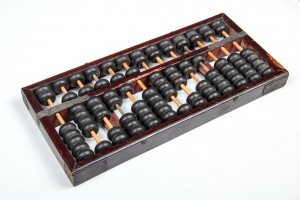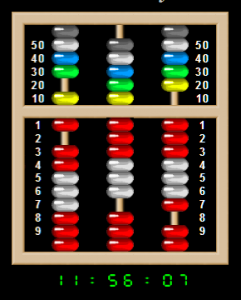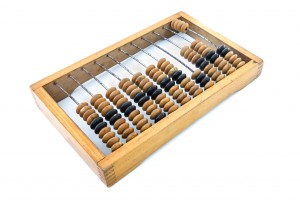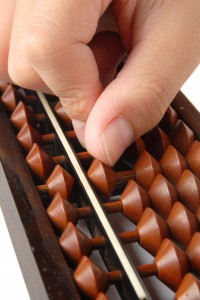11 Apr Abacus, the oldest calculator
Using a tool to do math and transact business has been around since 2700 BC in the Mesopatamia region. Also called a counting frame, the Abacus, is the oldest calculator in existence. Our article today will discuss the various types of abaci and why we have selected the one we use at ALOHA.
Abacus, the oldest calculator
One uses an abacus for addition, subtraction, multiplication and division. It is used by manually sliding counters along rods bound by a frame, hence the name, counting frame. The beauty of a device like this is that it helps students with learning a basic number system, borrowing and carrying numbers, combinations of five and ten, and visualization of math and mental calculations. One of the additional benefits of an abacus is that it can be used by visually impaired individuals.
Sumerian Abacus –
created in the 2700-2300 BC time period in Mesapotamia area. This is the oldest form of the counting device. The image to the right represents this type of abacus in the form of a clock. It is also referred to as a sexigesimal system that has a 60 count platform. That could be why it works so well with our current time keeping practices. Could you imagine wearing this on your wrist?

Reconstruction of a Roman Abacus – RGZ Museum in Mainz, 1977 The bronze original is at Bibliothèque nationale de France – Paris. (Photo credit: Wikipedia)
Roman Abacus –
was really more of a table with three different types called the dust abacus, the line abacus and the grooved abacus. Imagine trying to do division with Roman numerals. For example the number 1943 would be MCMXLIII. Now divide that by LXVII and you get what? XXVIIII. That takes a great deal of thinking for me!
Suanpan –
This is the version of the Abacus used by the Chinese. It has been in use since the 2nd  century BC. The appearance is frame construction with 2 beads on each row above a dividing bar with 5 beads below. The Suanpan allows for the basic arithmetic functions along with square root and cube root function.
century BC. The appearance is frame construction with 2 beads on each row above a dividing bar with 5 beads below. The Suanpan allows for the basic arithmetic functions along with square root and cube root function.
The Schoty is what the Russians call their abacus. There are 10 beads on each rod. Calculations are performed by moving all the beads from the right side to the left side. Each wire has 10 beads on bowed wires. The row with the 4 beads is used for quarters of a “kopek” or “ruble”. These abaci were used regularly in Russia until the 1990’s. There is a version used in many Western countries similar to the Russian Schoty.
The photo to the right is an example of a Japanese abacus. It features one bead at the top and either 4 or 5 beads below. The Japanese abacus is named a Soroban. The Soroban has an odd number of columns. Typically there are a minimum of 9 columns denoted with a dot every three columns. Using visual imagery of a soroban, one can arrive at the answer in the same time as, or even faster than, is possible with a physical instrument. There is a great correlation to mental imagery of this abacus. We use the Soroban Abacus for our ALOHA programs.






Sorry, the comment form is closed at this time.